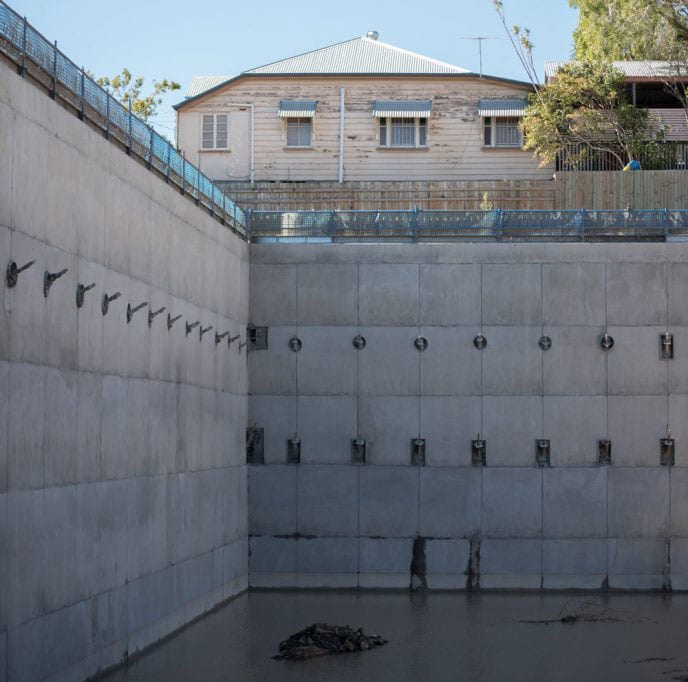A Guide to Ground Anchor Installation
One of the most versatile devices used in the construction industry to hold, restrain, and support building, civil engineering, and other structures are ground anchors. Ground anchors, otherwise known as earth, percussion driven, or mechanical anchors, can be permanent or temporary devices that are either impact driven into the ground or run in spirally, depending on the design and intended force-resistance characteristics. Ground anchors have a wide range of applications in geotechnical and construction, including supporting structures such as excavation walls, slopes, embankments, and retaining and shoring systems, and can be used to provide both vertical and horizontal support.
Ground anchors are available in a range of sizes and capacities, being up to 70 m in length and having a capacity of more than 3,000 kN. The advantages of ground anchors are that they are lightweight, corrosion-resistant, and can be installed from the ground level either by hand or using specialised portable devices, depending on the size and ground conditions. After ground anchors have been installed, they apply pressure on a cone of the ground that surrounds their length, providing excellent resistance to movement. Since ground anchors create only minimal soil disturbance during installation and can be stressed to a precise holding capacity, they have become a popular technique for anchoring a vast range of structures into position.
Types of ground anchors
There are numerous types of ground anchors used in the geotechnical and construction industry today, however the most common types are temporary and permanent ground anchors.
Temporary ground anchors
A temporary ground anchor is commonly used in construction as part of a retaining system when excavating a site to help prevent the excavation wall from collapsing. As the excavation process continues, temporary anchors are installed roughly every three metres by drilling into the surround bedrock and grouting high tensile strand anchors into position.
Temporary anchors are designed to stay in place until the structure itself can support the excavation. Once this happens, the temporary anchors are typically ‘de-stressed’ meaning that they no longer provide support, and the anchor heads removed.
Permanent ground anchors
A permanent ground anchor is generally used in construction as part of a retaining structure during excavation, where the final structure may not provide adequate support on its own. Permanent anchors are also commonly used where corrosion resistance is needed, such as retaining walls and marine environments.
Permanent anchors are generally manufactured from high tensile strand or bar. Bar anchors can either be stainless steel or galvanised steel, depending on the environmental conditions and engineering requirements.
Design and installation
The life expectancy of ground anchors varies according to the corrosivity of the soil and the materials used. The primary component of ground anchors, often referred to as ‘tendons’, can be manufactured from materials such as steel, glass fibre reinforced plastic (GRP), or aluminium, which all have different lifespans.
The installation method will be dependent on the type of structure being built, however drive rods, spiral sockets, and impact hammers are typically used to screw or push the anchor into the ground, along with the help of hand tools. The ground conditions will generally dictate whether it’s necessary to bore a hole for the installation of anchors first, or whether it’s necessary to use a casing to support the hole prior to anchor installation. In any case, the hole can be pre-grouted or post-grouted after installation. At this point, the anchor is then tensioned and locked off against a head plate. It’s vital that no services in the ground are damaged during installation so proper care must be taken.
Anchors work effectively in both granular and hard soils, although a larger anchor size and deeper depth is required for installation into soft clays. The success of an anchor installation is dependent on several factors, including proper drilling equipment, correct installation methods, performing load/stress tests, and an experienced design. The pull-out capability of anchors can be tested in similar ground conditions prior to installation.
Our team at Evolution Shotcrete are highly experienced in the installation and testing of ground anchors across a wide range of applications, including excavation walls, slopes, embankments, and retaining and shoring systems. If you have any questions about ground anchors or the installation process, get in touch with our friendly team today on 07 5561 8885, or alternatively visit our website for additional information: https://www.evolutionshotcrete.com.au/our-services/anchors/

